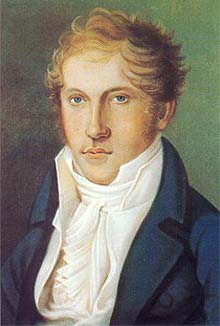Related Research Articles

Louis Spohr, baptized Ludewig Spohr, later often in the modern German form of the name Ludwig, was a German composer, violinist and conductor. Highly regarded during his lifetime, Spohr composed ten symphonies, ten operas, eighteen violin concerti, four clarinet concerti, four oratorios, and various works for small ensemble, chamber music, and art songs. Spohr invented the violin chinrest and the orchestral rehearsal mark. His output spans the transition between Classical and Romantic music, but fell into obscurity following his death, when his music was rarely heard. The late 20th century saw a revival of interest in his oeuvre, especially in Europe.

The String Quartet No. 14 in D minor, D 810, known as Death and the Maiden, is a piece by Franz Schubert that has been called "one of the pillars of the chamber music repertoire". It was composed in 1824, after the composer suffered a serious illness and realized that he was dying. It is named for the theme of the second movement, which Schubert took from a song he wrote in 1817 of the same title.

The String Quartet No. 13 in A minor, D 804, Op. 29, was written by Franz Schubert between February and March 1824. It dates roughly to the same time as his monumental Death and the Maiden Quartet, emerging around three years after his previous attempt to write for the string quartet genre, the Quartettsatz, D 703, that he never finished.

Bernhard Molique was a German violinist and composer.

In music, an octet is a musical ensemble consisting of eight instruments or voices, or a musical composition written for such an ensemble.

August Joseph Norbert Burgmüller was a German composer.

The String Octet in E-flat major, Op. 20, was written by the 16-year-old Felix Mendelssohn during the fall of 1825 and completed on October 15. Written for four violins, two violas, and two cellos, this work created a new chamber music genre. Conrad Wilson summarizes much of its reception ever since: "Its youthful verve, brilliance and perfection make it one of the miracles of nineteenth-century music." This was one of the first works of Mendelssohn to be very well-received.
Classic Produktion Osnabrück is a record label founded in 1986 by Georg Ortmann and several others. Its declared mission is to fill niches in the recorded classical repertory, with an emphasis on romantic, late romantic, and 20th-century music. The label also aims to release complete cycles of recordings, such as complete sets of symphonies, concertos, chamber music, and so forth. It is the house label of online retailer jpc.
The String Quartet No. 2 in A minor, Op. 13, was composed by Felix Mendelssohn in 1827. Written when he was 18 years old, it was, despite its official number, Mendelssohn's first mature string quartet. One of Mendelssohn's most passionate works, the A minor Quartet is one of the earliest and most significant examples of cyclic form in music.
Pieter Hubert Ries was a German violinist and composer.
The String Sextet No. 1 in B♭ major, Op. 18, was composed in 1860 by Johannes Brahms and premiered 20 October that year in Hanover by an ensemble led by Joseph Joachim. It was published in 1862 by the firm of Fritz Simrock.
Louis Spohr's String Quartet No. 30 in A major, Op. 93, was completed in September of 1835, it is one of eight such works Spohr wrote between 1806 and 1835. He would not write another string quartet for ten years.
Louis Spohr's String Quartet No. 11 in E major, Op. 43, was completed in May of 1818. It is one of eight similar works Spohr wrote between 1806 and 1835. Like a concerto, the work is designed to display a soloists skills, but in a more intimate setting than the concert hall.
Louis Spohr's String Quartet No. 3 in D minor, Op. 11, was completed in 1806, then published in 1808. It is the first of eight quatuors brillants written by Spohr. Inspired by similar works written by Viotti and Rode, the composition is a mini-concerto, written to provide the composer with the means of demonstrating his skills with a violin in a more intimate setting than a concert hall.
Potpourri No. 4 in B major, Op. 24, by Louis Spohr, was completed in 1808. The work was one of several compositions that Spohr, a noted violinist, wrote to provide a virtuoso encore when performing more serious chamber works such as Beethoven's Opus 18 string quartets. Written for a virtuoso first violin, with accompanying string trio, like many similar works of this period, was based on themes from popular operas, in this case Mozart's Die Entführung aus dem Serail and Don Giovanni.
Louis Spohr's String Quartet No. 19 in A major, Op. 68, was composed by Spohr in 1823. Like a concerto, the work is designed to display a soloist's skills, but in a more intimate setting than the concert hall.
Louis Spohr's String Quartet No. 6 in G minor, Op. 27, was completed in 1812. Dedicated to Count Razumovsky, the dedicatee of Beethoven, Opus 59. string quartets, the composition, like the earlier String Quartet No. 3, is a concertante work with the musical emphasis being placed on the first violinist, while the other players act as accompaniment. Keith Warsop notes that the second Adagio movement seems to have been adapted from sketches to an unfinished violin concerto.
String Quartet No. 18 may refer to:
The Danubius Quartet was formed in Hungary in 1983.